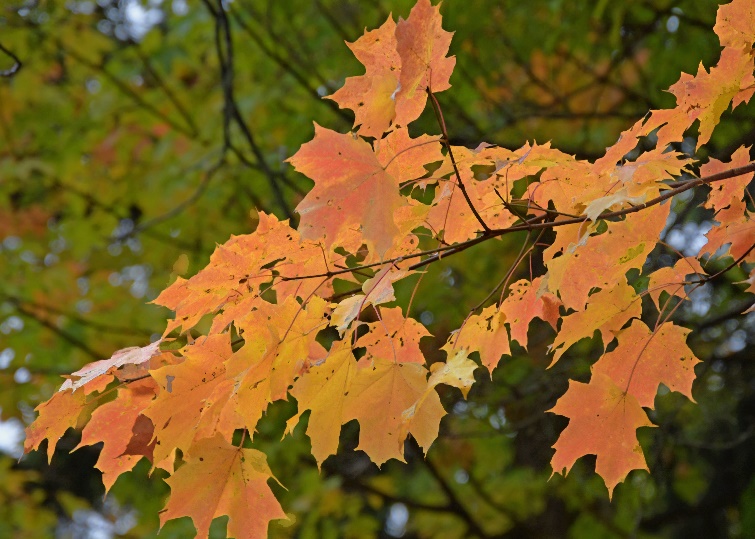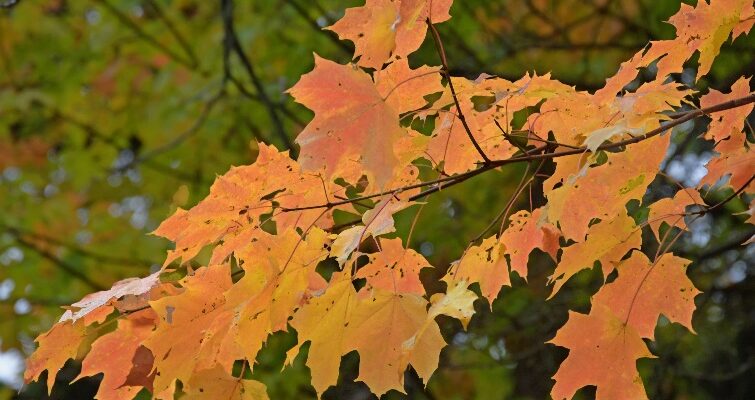Rural Perspectives: Common sugar maple tree can live for several hundred years
by Diane Constable

The leaves of the sugar maple tree turn shades of brilliant yellows and oranges in autumn. Photo credit Diane Constable
The sugar maple is one of our most iconic and versatile trees and is common in our woodlands and neighborhoods. Its scientific name, Acer saccharum, is Greek for “like sugar.”
These trees grow up to 135 feet tall and live for several hundred years. Some have been found that are more than 500 years old. The small greenish-yellow flowers bloom in spring and the winged seeds (often called “helicopters”) ripen then fall to the ground in late summer. Come autumn, the leaves turn shades of brilliant yellows and oranges, often on the same tree.
The sugar maple is an important food source for many animals. The seeds, twigs and leaves are eaten by deer, rabbits, squirrels, chipmunks and porcupines. Many insects are supported by the maple, including honeybees that feed on the flower pollen. Over two dozen bird species call it home.
The tree has been prized for eons. Native Americans used the sap as a sweet syrup and to season meat. The wood was used for furnishings, bowls and canoe paddles.
The heavy, close-grained wood is still used for furniture—and for an array of other things, including baseball bats, bowling pins and alleys, NBA basketball courts, tool hands, interior flooring and trims, pianos, violins, guitars, and many other items.
Sap is harvested safely from the tree in late winter, when the sap flow is triggered by above freezing temperatures during the day and below freezing temperatures at night. It takes 40 gallons of sap to make 1 gallon of syrup. Michigan produced nearly 200,000 gallons of syrup last year, making it the fifth-largest producer in the country.
Fun Fact: Pioneers used the maple for firewood and then recycled the ashes to make soap.
 Diane Constable is an avid photographer. She serves on the Unadilla Township Planning Commission and is a member of the township’s Parks and Recreation Committee. Diane also enjoys her dogs and gardening.
Diane Constable is an avid photographer. She serves on the Unadilla Township Planning Commission and is a member of the township’s Parks and Recreation Committee. Diane also enjoys her dogs and gardening.


